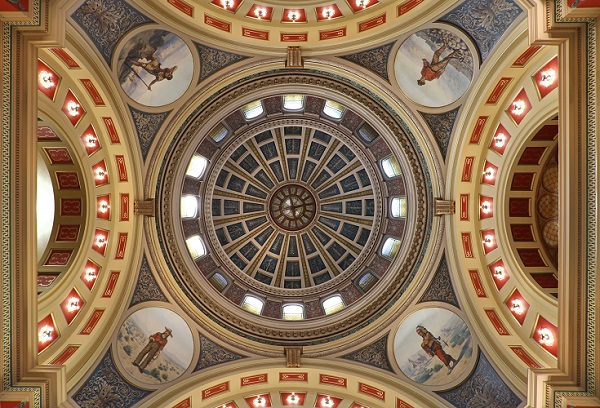Capitol Art
As is customary in American statehouses, Montana’s Capitol is adorned with a variety of murals and statues that embellish its grandest spaces. These artworks, however, serve as more than mere decoration. They also depict the Treasure State’s storied past and the notable figures who played key roles in the state’s development. As noted by art historian Patricia M. Burnham, together these works comprise “one of the richest troves of statehouse art in the country.... [Their significance] lies not in the number of paintings but in their cumulative effect: the stories that they tell, their aesthetic appeal, and their relationship to the building that houses them.”

Montana’s Capitol was constructed in two phases—the original structure was completed in 1902 and wings were added in 1911–12. Although the two building projects occurred only a decade apart, the approach toward securing the desired artwork for each differed dramatically. For the original edifice, the commission charged with its construction secured the services of a “recognized” eastern firm—F. Pedretti’s Sons from Cincinnati, Ohio—who handled all decorating and furnishings, including the painting of the murals (although Governor Joseph K. Toole selected the subjects to be depicted). By 1911, however, the state legislature had enough confidence in Montanans’ talent to demand that Treasure State artists be selected for the job. Consequently, three Montana artists—R. E. DeCamp, E. S. Paxson, and Charles M. Russell—produced murals that have become, as predicted by the state legislature in 1913, “a lasting source of pride for the people of this commonwealth.”
Follow the links below to learn more about the Pedretti paintings; the DeCamp, Paxson, and Russell murals; and other paintings and statues that have been added subsequently to “the People’s House.”

